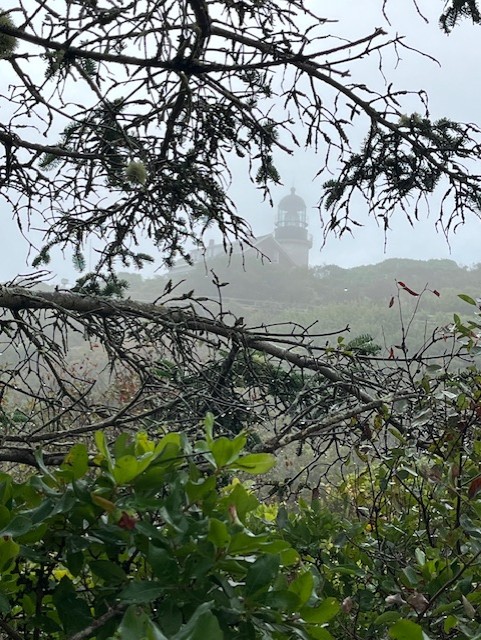
They say to know something well, you need to sit with it for a while. Since being perched atop Seguin’s prospect, I see Maine’s coast and history a little differently than I did just three months ago. Isolated from many 21st century concerns, I’ve had the chance to really pay attention to things that usually go unnoted like the sage green-gray or saffron rosettes of lichen crawling up the rocks, the blueness of the bay berries, the skirt of bubbly bladder wrack between the tide marks, and the green ribbony snakes that lounge and slither.
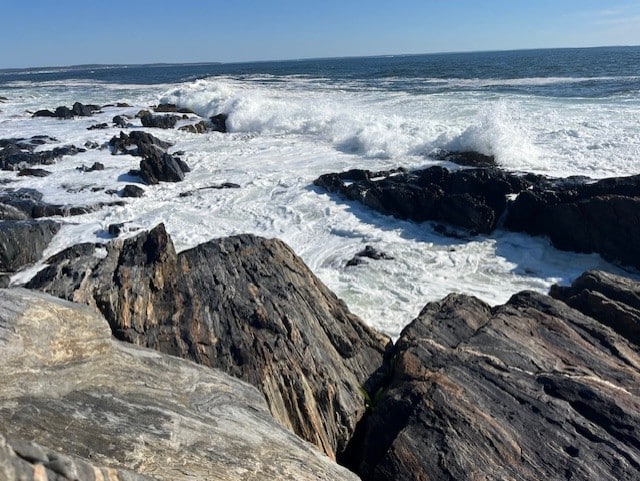
On Friday, residual hurricane waves rolled over the cove and swept away the sandy beach. Tree trunks and floating islands of foam churned in the water turning the place geese had rafted and I had swum into a threatening swirl. The known became the unfamiliar in no time.
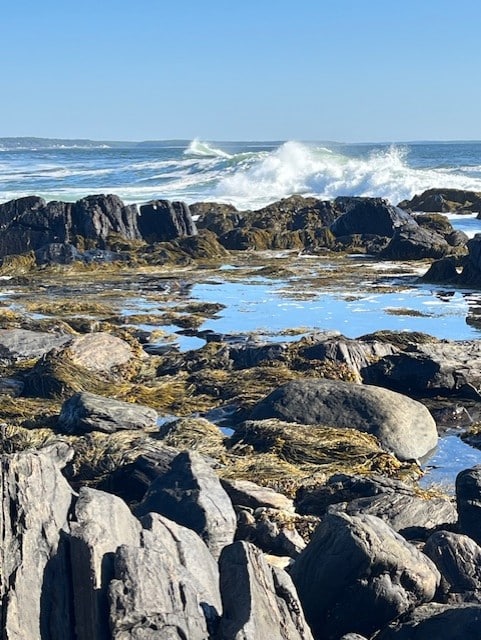
With fewer distractions than on the mainland, paying close attention offered something else- the chance to be amazed. I found myself stopping to think about the hummingbirds that made it out here and were determined to suck nectar from my reading chair’s floral fabric. And I considered the power of the week’s surf that scooped up and displaced tons of white sand in hours.
But it’s not just nature that can fill a person with awe. I imagined tubercular Fresnel deriving his calculations and formulating his glass or Winn creating the intricate metalwork components. I thought about fishermen pulling sodden wooden traps from dories and sailors heading home in a gale. Often, I considered what it would be like feeding a crew of hungry men or putting kids to bed next to the relentless foghorn. When I think about the resilience and hardy pluck needed to navigate life on Seguin or the nearby shore a century ago, it changes my perspective on what is important or difficult now.
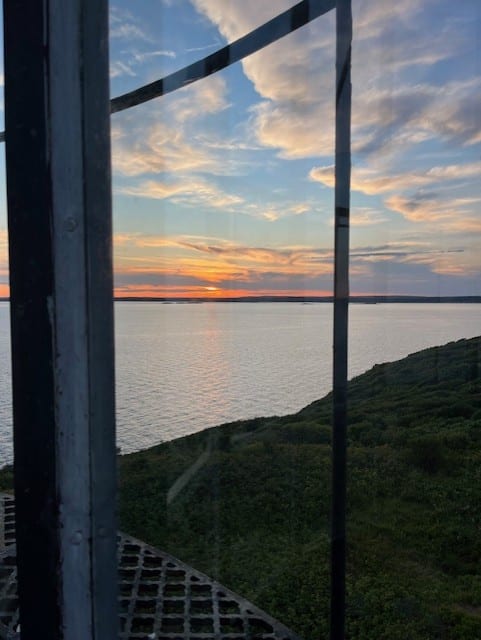
Psychologists and poets say awe is the experience of realizing the limits of your significance in the world and that with this realization comes increased humility. They write that awe makes connection with others easier. So, the irony here is that by living offshore or visiting a semi-wild island distant from daily concerns, you cultivate a greater sense of connection to others.
There have been many others visiting here these months: young and old, groups and singles, timid and brave. Locals and folks from away have come. History lovers, designers, journalists, riggers, economists, scientists, romantics, librarians, home schoolers, doctors, raconteurs, whistlers, philosophers, investors, psychics, paddlers, farmers, film makers, artists, philanthropists, preservationists, pilots, dreamers, fishermen, mechanics, public servants, foodies, writers, dancers, and teachers have shared the views and salt air with us this summer.
For the quantitatively inclined: from June 4- August 26 we had 1,237 visitors. Peter and I conducted 322 tours up the tower (that’s 29,624 stairs up and down). We had 21 campers in the campsite and 22 overnight guests above the museum. The youngest visitor was an infant in a papoose just shy of two months and the oldest was somewhere in his eighties. People traveled from as far as Hawaii and Europe and as close as Popham. Two arrived with the moniker Seguin -a cat and a lovely adolescent.
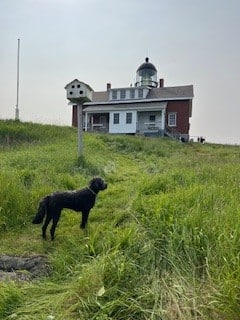
Like me, I imagine they will especially remember their time on the island because it was hard to get to, there wasn’t anything “to do”, and while always the same- it’s ever changing. Sarah, an early July volunteer from Kodiak and Nashville, and later Chloe will step in for me and help Peter with the closing weeks of the season. Po and I will leave next week and try to hold onto for as long as possible the sense of awe found on Seguin this summer.



I’ve enjoyed reading your blog!
Can we still come ashore and walk around week of Sept 15?
Hi Natasha,
Yes, the moorings remain, and the island is open, however, the station is closed and there are no amenities available.
Thank you.